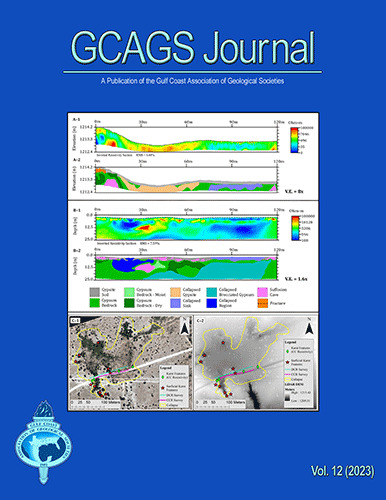Contents
Cover and Spine
Front Matter
Volcanic Origin and Significance of Glauconite Grains in the Upper Cretaceous Austin Chalk Formation in the Balcones Igneous Province, South and Central Texas
Robert G. Loucks and Robert M. Reed
Back-Reef Depositional Environments in a Lower Cretaceous (Sligo) Shelf-Margin Complex: Insights into Ultradeep Reservoir Preservation and Controls on Stacking Patterns in an Outer Platform Setting
Kelly E. Hattori, Robert G. Loucks, and Hongliu Zeng
Depositional Processes at the Lower Wilcox Shelf–Slope Transition Zone
Mariana I. Olariu and Hongliu Zeng
Regional Sequence Stratigraphy, Biostratigraphy, and Facies of the Upper Cretaceous Austin Chalk in South and Central Texas
Christine Griffith, James Pospichal, Eric de Kaenel, Michael Pope, and Arthur Donovan
Effects of Salinization Pathways upon Morphogenic and Geochemical Features of Coastal-Margin Vertisols, Aransas National Wildlife Refuge, Aransas County, Texas
Sarah J. Kogler and Steven G. Driese
Characterization and Delineation of Potential Evaporite Geohazards Using Electrical Resistivity Methods along FM 2185, Culberson County, Texas
Lenora D. Perkins, Kevin W. Stafford, and Wesley A. Brown
Unraveling the “Eaglebine”: A Sequence Stratigraphic Framework for the Eagle Ford Group in the East Texas Basin
A. D. Donovan, P. Johnson, S. R. Gifford, M. J. Meyer, S. Dangtran, and M. Pope |
|
2023 (Vol. 12)

Cover: Site 4, 120 m segment of CCR and DCR data. (A–1) CCR inverted resistivity section to depth of ~2.5 m, RMS = 6.68%, and (A–2) CCR interpreted inverted section. (B–1) DCR inverted resistivity section to depth of ~25 m, RMS = 7.59%, and (B–2) DCR interpreted inverted section. Note vertical exaggeration of 8x and 1.6x for CCR and DCR, respectively. (C–1) Orthoimagery of the region of collapse and (C–2) elevation model derived from lidar of the region of collapse. Green diamonds represent potential karst features traversed by CCR survey and interpreted in A–2; red stars indicate mapped surficial karst features. For more information, please see Perkins et al. paper herein. |

